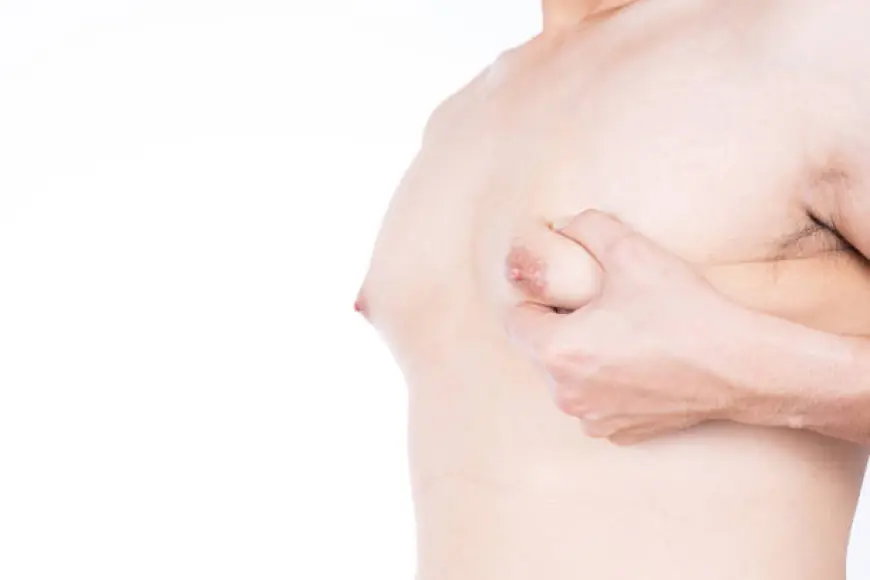Gynaecomastia Surgery Dubai: What to Expect Before and After
Learn what to expect before and after Gynaecomastia surgery in Dubai. Tips and recovery insights from Tajmeels Clinic.

For men dealing with enlarged breast tissue, gynaecomastia surgery in Dubai offers an effective solution to restore a natural chest contour. While the procedure promises transformational results, understanding what to expect before and after surgery is essential for a smooth, successful experience. Proper preparation, realistic expectations, and post-operative care all play a crucial role in achieving optimal outcomes.
Dubai’s advanced clinics and experienced surgeons ensure patient comfort and safety, making the city a top choice for men seeking this procedure. This guide walks you through the pre-surgery steps, the procedure itself, and recovery tips to help you feel confident throughout your journey.
Preparing for Surgery: What You Need to Know
Preparation begins with understanding your body, health, and expectations.
1. Initial Consultation
Your surgeon will evaluate your chest, discuss medical history, and determine the most suitable surgical approach. They may recommend imaging or lab tests to ensure safety and precision.
2. Lifestyle Adjustments
-
Stop Smoking and Alcohol: Both can interfere with healing and increase complications.
-
Review Medications: Certain drugs, like blood thinners, may need to be paused before surgery.
-
Maintain a Healthy Weight: Stable weight helps achieve better results and reduces post-op complications.
3. Setting Realistic Expectations
Understanding what the surgery can and cannot achieve is essential. Your surgeon will discuss expected outcomes, potential scarring, and recovery timelines to align expectations with reality.
The Gynaecomastia Surgery Procedure
Surgery techniques are tailored to individual needs, ensuring the best possible results:
1. Liposuction
Ideal for patients with excess fatty tissue, liposuction removes fat through small incisions, shaping the chest with minimal invasiveness.
2. Excision
When glandular tissue or loose skin is present, excision removes tissue via small incisions around the areola or under the chest.
3. Combination Approach
Many surgeons use a combination of liposuction and excision for comprehensive results, ensuring both fat and glandular tissue are addressed while contouring the chest naturally.
4. Duration and Anesthesia
The procedure typically takes 1–3 hours and may use general or local anesthesia depending on the extent of the surgery and patient comfort.
What to Expect Immediately After Surgery
Recovery begins in the clinic and continues at home with careful attention to post-op care:
1. Initial Recovery
-
Mild swelling, bruising, and discomfort are common in the first few days.
-
Compression garments are worn to support the chest and minimize swelling.
-
Pain management is provided through prescribed medication.
2. Activity Restrictions
-
Light activities can resume within a few days.
-
Avoid strenuous exercise and heavy lifting for 4–6 weeks.
-
Follow-up appointments ensure proper healing and early detection of any complications.
Long-Term Recovery and Results
1. Swelling and Healing Timeline
-
Swelling typically peaks in the first week and gradually reduces over 3–4 weeks.
-
Incisions heal within 1–2 weeks, with scars fading over several months.
2. Achieving Optimal Results
-
Results become more apparent as swelling subsides, usually within 1–2 months.
-
Maintaining a healthy lifestyle and stable weight helps preserve long-term outcomes.
3. Emotional and Psychological Benefits
Many patients report improved confidence, comfort in social situations, and satisfaction with their body image following recovery.
Tips for a Smooth Recovery
-
Follow Post-Op Instructions: Adhere strictly to your surgeon’s guidelines to prevent complications.
-
Wear Compression Garments: These aid in contouring the chest and reducing swelling.
-
Stay Active, But Gradually: Short walks promote circulation, but avoid heavy lifting until cleared.
-
Monitor for Any Issues: Contact your surgeon if you notice unusual pain, swelling, or signs of infection.
Choosing a Clinic and Surgeon in Dubai
The right surgeon and clinic play a significant role in the success of your surgery. Look for:
-
Board-certified surgeons with experience in male breast reduction
-
Advanced surgical technology and modern facilities
-
Comprehensive pre- and post-operative care programs
-
Positive patient reviews and before-and-after galleries
Clinics in Dubai, such as Tajmeels Clinic, provide expert guidance, safe procedures, and attentive care, helping men achieve natural-looking results with minimal discomfort.
Final Thoughts
Understanding what to expect before and after gynaecomastia surgery in Dubai helps men approach the procedure with confidence and clarity. Proper preparation, choosing a skilled surgeon, and following recovery instructions are key to achieving the desired chest contour and long-lasting satisfaction. With advanced techniques and personalized care, clinics like Tajmeels Clinic ensure that every patient’s surgical journey is safe, smooth, and rewarding.
FAQs
1. How long is the recovery period after surgery?
Most patients resume daily activities within a week, but full recovery takes 4–6 weeks.
2. Will I have visible scars?
Incisions are strategically placed around the areola or under the chest, and scars fade significantly over time.
3. When can I see the final results?
Results become noticeable as swelling decreases, typically within 1–2 months, with optimal appearance around 3–6 months.
4. Is the procedure painful?
Discomfort is manageable with prescribed medications, and anesthesia prevents pain during surgery.
5. Can gynaecomastia recur?
Recurrence is uncommon if hormonal balance is maintained and a healthy lifestyle is followed.
6. How do I prepare for surgery?
Consultation, medical evaluation, lifestyle adjustments, and understanding recovery expectations are essential steps.
What's Your Reaction?
 Like
0
Like
0
 Dislike
0
Dislike
0
 Love
0
Love
0
 Funny
0
Funny
0
 Angry
0
Angry
0
 Sad
0
Sad
0
 Wow
0
Wow
0
















































